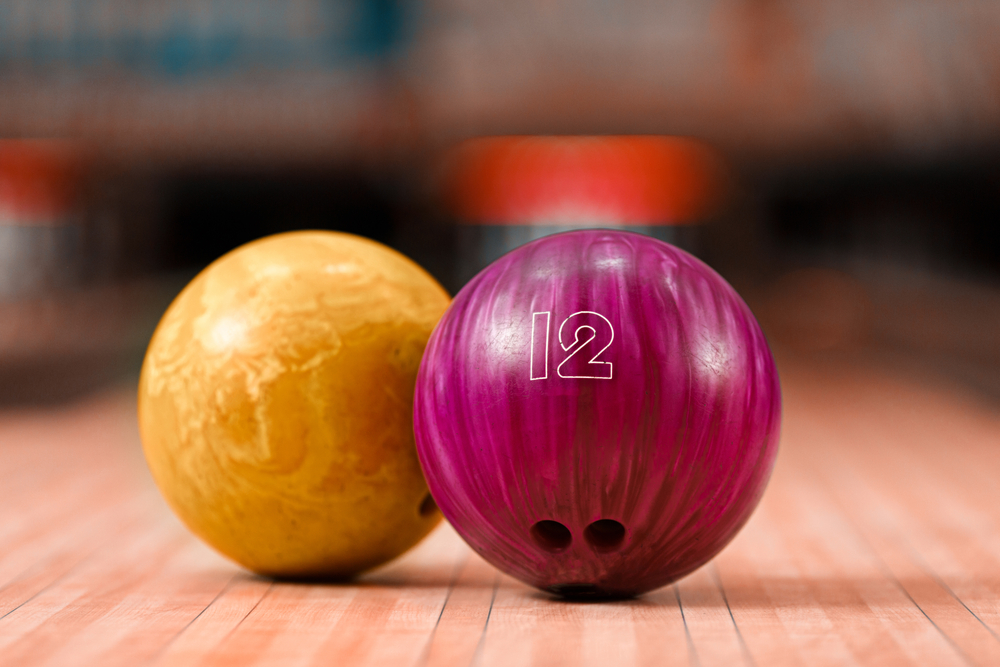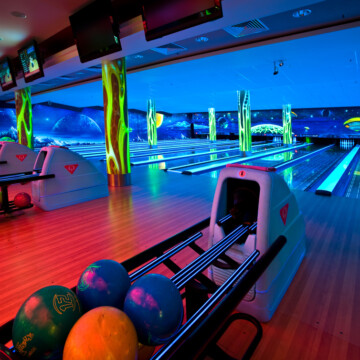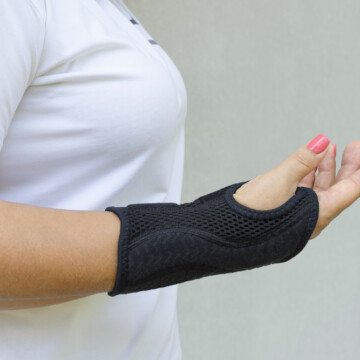
Every bowler is unique and has a special style of bowling, whether through their approach, throwing technique, release, or even a little artistic flair. That being said, while every bowler is unique, bowlers can usually be filtered into three distinct categories of style: cranker, stroker, and tweener.
While each category of style has its focuses and strengths throughout this article, we will focus on the best bowling ball for a stroker, the stroker style, and its many benefits.
Contents
- 1 What Is the Difference Between Stroker, Tweener, and Cranker in Bowling?
- 2 What Is the Average Speed and Revs for Stroker Bowling Style?
- 3 What Is a Stroker Bowling Style?
- 4 What Is the Difference Between the Stroker Bowling Style and the Cranker Bowling Style?
- 5 What Is the Difference Between the Stroker Bowling Style and the Tweener Bowling Style?
- 6 What Is a Power Stroker in Bowling?
- 7 How Do Power Strokers Throw Their Ball?
- 8 How Do You Bowl Stroker Style?
- 9 What Oil Patterns Does Stroker Style Work Best On?
- 10 What is the Best Bowling Ball for a Stroker?
- 11 What's the Best Bowling Ball Layout for a Stroker?
for strokers. It includes a reactive pearl coverstock, 1500-grit/polished, and is available in many different color patterns.
Key Takeaways
- Bowling Styles Overview: Three main styles differentiate bowlers: Cranker, Stroker, and Tweener, based on revs (revolutions) and lane position. Strokers, with a focus on accuracy and finesse, prefer moderate speed (14-18 mph) and revs (250-300) for controlled throws.
- Best Bowling Ball for Strokers: Pyramid Path Rising Pearl Bowling Ball is recommended for its reactive pearl coverstock and 1500-grit polish, enhancing control and finesse on various lane conditions.
- Stroker Style Defined: Emphasizes accuracy over power, with a straighter, more controlled throw from the center towards the right side of the lane, aiming for about 300 revs per throw.
- Power Strokers: Blend accuracy with power, achieving 300-370 revs using a controlled hook to strike the pocket effectively. This style requires practice to master the balance between power and precision.
- Adapting to Oil Patterns: Stroker style is versatile, allowing adjustments to different oil patterns for maintaining accuracy and control. Soft hooks and alignment changes are key strategies based on lane conditions.
What Is the Difference Between Stroker, Tweener, and Cranker in Bowling?
Two main distinctions set the three styles apart, and they are the number of revs a bowler imparts on a ball and the location from where the bowler throws the ball on the lane.
While these distinctions are not perfect, they help categorize different bowlers into style types that can be used during tournaments and leagues.
Revolutions (Revs)
A revolution of the bowling ball is the complete rotation around its axis and bowlers use the number of their revs to determine the power and style of their throw.
By finding out your rev rate you can make adjustments to your throws for speed and accuracy as well as practice different types of throws.
Location
The location from which bowlers throw their ball also help determine their style. Crankers start out on the far left of the lane and really try to hook their ball into the pocket on the right.
Strokers throw off the center of the lane but play towards the right side of the lane and go for a straight and narrow shot while Tweeners stand in the center of the lane and aim for somewhere in between right and left.
(Note: The above locations are for right-handed bowlers, left-handed styles would be located in reverse.)
| Bowling Style | Speed (mph) | Revs | Approach Location | Focus |
|---|---|---|---|---|
| Stroker | 14-18 | 250-300 | Center/right side | Accuracy and finesse, controlled straight throw |
| Cranker | Varies | >350 | Far left side | Power, high revs, aggressive hook |
| Tweener | Varies | Varies | Center | Blend of Cranker and Stroker styles, adaptable |
What Is the Average Speed and Revs for Stroker Bowling Style?
Strokers tend to bowl at an average rate of fourteen to eighteen miles per hour. They also have an average of 250 to 300 revs a throw, though the goal is to get as close to 300 as possible.
By keeping their speed moderate and have fewer revs than other styles like crankers, the stroker bowler is able to better control the trajectory of their ball and make adjustments to fit lane conditions.
Many strokers also choose to add in a bit of a hook throw to their bowling.
These hooks do not rotate as much or are not as fast as cranker throws, but the small hook allows them to approach the pocket at a better angle in order to get more pins.
What Is a Stroker Bowling Style?
The stroker style of bowling is a well-balanced style that focuses on finesse and accuracy versus blasting power. Bowlers approach the center of the lane and aim for the pocket behind the head pin.
They tend to play off the right side of the lane and keep their shots controlled and straight, with an average of 300 revs.
Stroker is the most popular bowling style due to its easy-to-approach and straightforward throws. It is also a good style for beginners to try since setting them up for hook balls or throwing on their non-dominant side may be difficult for beginners.
The stance of the stroker is also a bit different from the other styles. They tend to square their shoulders with the alley, and their backswings are not as large as crankers, so there is less power behind their throws.
Therefore, the stroker must rely on accuracy to get strikes and pins since there is not as much power behind their shots as with crankers.
A stroker will also try to prevent the cupping of their wrist in the delivery of their medium swing. This is done to once again focus on accuracy and finesse versus raw power.
Everything aspect of the stroker style should focus on the aiming of the shots instead of the power of the roll.
What Is the Difference Between the Stroker Bowling Style and the Cranker Bowling Style?
While strokers focus on accuracy and finesse, their counterparts, the crankers, focus on raw power.
A cranker’s goal is to generate a lot of power with their throws in the hopes of blowing the pins right off the deck they sit on, and they do this through a variety of different techniques.
Unlike strokers, crankers have medium to very high swings, gaining more momentum and power behind their throws. A cranker will also cup their wrist on the release of their ball to get a few more revs into their throw.
While stokers are happy to sit at 300 revs a throw, crankers aim to have at least 350 revs in their throw, creating more spin and power in the delivery.
Crankers also approach and throw their balls in very different ways from strokers. While strokers tend to approach the center of the lane and use the right side of the lane for play, crankers use a “gutter to gutter” approach.
The gutter to gutter approach is where the cranker approaches the lane on the far left side of the lane (or right if they are left-handed) and throws their ball to the outer part of the right side of the lane.
Their balls are then expected to hook hard, rolling back towards the middle of the lane and hitting the pocket with a lot of power.
What Is the Difference Between the Stroker Bowling Style and the Tweener Bowling Style?
The stroker bowling style is very different from the cranker bowling style. However, the stroker shares some similarities when it comes to the tweener style.
The tweener style is based on the fact that the bowler uses various techniques and styles from both the cranker and stroker styles.
They tend to drift to the center of the lane much like strokers but can also play off the left and right sides using different throws like a hook ball.
This type of style means that the tweener bowler can use various throws with different revs, aims, and approaches while bowling a game.
While this sounds like the best of both worlds, the tweener style does have a minor setback.
The sheer number of modifications they can make can sometimes take too long to figure out the proper technique and approach for a lane, giving them a slight disadvantage in time and scores.
Stokers and Crankers do not have to worry about figuring out which approach they need to use; they can adjust their stance and throws to solve problems to the best of their ability.
What Is a Power Stroker in Bowling?
As mentioned before, the goal of the stroker style is to deliver consistent throws that focus on accuracy instead of power.
Enter the power stroker. These bowlers still work on throwing consistent and accurate throws, but they also utilize a hook to add some power to their throws.
Power stroking can be hard to master due to the careful control that the bowler must maintain while the bowler increases their throw’s power. Many years of practice go into mastering the art of power stroking, and errors are still commonplace among professional bowlers.
How Do Power Strokers Throw Their Ball?
The goal of the power stroke bowler is to deliver a throw that maintains its accuracy but holds the power of a cranker bowler.
A good power stroker will have an average of 300-370 revs in their throws and often will utilize a small hook to hit the pocket just right.
To achieve the speed needed to be a power stroker, the bowler generally uses a high backswing and keeps their shoulder open to generate a better hook. Accuracy is still crucial, though, so hooks must be perfectly aimed and not as wide open and aggressive as cranker hooks.
How Do You Bowl Stroker Style?
When you are bowling stroker style, you want to make sure all of your movements are geared toward accuracy. Doing so will allow you to target the pins and pockets and give you more of a natural flow in movement.
Position:
Stroker bowlers should set up to approach the lane near the center of the lane. Bowlers should place their feet evenly while squaring their shoulders to the bowling alley.
You want to keep a closed shoulder and keep the ball a bit above chest level as you aim.
Throw:
When strokers throw their ball, the main thing they try to do is keep a closed shoulder and avoid cupping their wrists.
A little bit of a hook is excellent to help maneuver through the lane’s oil pattern, but the hard throws are generally forgone for more controlled throws.
Strokers use a medium to medium-low backswing to control their ball and aim for the pocket using various targeting methods.
Release:
Upon the ball's release, many strokers give the ball a slight tilt of the axis to generate a smaller hook as the ball nears the pins.
Getting the slight tilt of the axis is generally done by removing the thumb from the ball first and allowing the fingers to create a smooth rotation while keeping the wrist straight.
This allows the ball's trajectory to be a straight, slower rotation shot down the lane until it reaches the up-boards, where a small hook will put the ball (hopefully) right in the pocket.
What Oil Patterns Does Stroker Style Work Best On?
One of the many perks of the stroker style with bowling is that this style is versatile. Strokers are able to make adjustments and alignment decisions depending on the lane conditions they find themselves up against.
With a stroker’s emphasis on accuracy, they are able to look at the conditions of the lane, see what type of oil pattern is laid down, and plan their strategy from there.
Soft hooks give them the ability to skirt the outside (or dry) part of the lane to avoid heavy saturated oil patterns that could slow or throw off their ball.
They are also able to make adjustments and alignment decisions should they find themselves needing to go through the center (or wet) part of the lane to avoid a loss in speed and accuracy.
What is the Best Bowling Ball for a Stroker?
Many strokers find they like to use resin or particle balls that allow the bowler to hook the ball without an overcompensation of power.
These balls are specifically designed to grip the lane and create friction better than regular house balls, which are generally made out of polyester or plastic.
Another factor that strokers change about their bowling ball is the type of grip drilled into the ball.
Many strokers like to have the option to create hook throws, and while resin and particle balls help with their surfaces having what is called a fingertip grip helps.
The fingertip grip is where the holes are drilled deep enough for only the first knuckle of the finger to fit in the ball, allowing faster releases and more options to spin.
What's the Best Bowling Ball Layout for a Stroker?
Many strokers choose to have a control layout drilled into their balls when the time comes.
These layouts are specifically designed to help the bowler control where and when the ball will hook, allowing for better-timed approaches and shots towards the pockets.
Control layouts also help prevent overreactions on a variety of lane conditions, allow you to weather different oil patterns while still keeping a steady aim.
These layouts also help prevent hooking from happening too soon or over-skidding. Practicing on a lane to get a sense of your ball’s reactions is always recommended.
So when it comes down to it, the stroker style is a versatile style that focuses on accuracy, control, and finesse. It’s straightforward throws and small hooks help bowlers increase their averages time and time again, resulting in it being the most popular style of bowling.
With its adaptability and emphasis on aim, the stroker style helps bowlers of all levels grow as bowlers and learn new adaptations and tricks as they mature.
My Final Words
The stroker style of bowling stands out for its strategic emphasis on precision and finesse over sheer power, making it an ideal choice for bowlers aiming to master control and accuracy. By maintaining a moderate speed of 14-18 mph and targeting revs in the range of 250-300, strokers navigate the lanes with a straightforward approach that prioritizes a controlled, straight throw toward the pocket. The Pyramid Path Rising Pearl Bowling Ball is highly recommended for strokers due to its reactive pearl coverstock and 1500-grit polish, which enhance performance across various lane conditions.
The stroker style's strength is adapting to different oil patterns, utilizing soft hooks and precise adjustments to maintain accuracy. This approach increases the bowler's adaptability and highlights the importance of understanding lane conditions and the strategic selection of bowling balls to optimize performance. The stroker style, characterized by a balance of accuracy, control, and strategic play, offers a compelling framework for bowlers at all levels to improve their game and achieve consistent success.
Kira Byrd, a Certified Fraud Examiner, holds a B.S. in Accounting from the University of Alabama at Birmingham. With a passion for bowling from her childhood, Kira has poured her expertise and personal experiences into creating and nurturing Bowling For Beginners. Kira's mission is to meet new bowlers where they are and guide them toward consistently achieving higher scores. With a focus on skill development and strategic techniques, she empowers readers to take control of their game and unlock their true potential.
Bowling For Beginners embodies strict editorial integrity, ensuring reliable and unbiased information. Kira's commitment to delivering valuable insights and practical strategies is reflected in every article. Here's an explanation of our editorial policy and how we get money.





